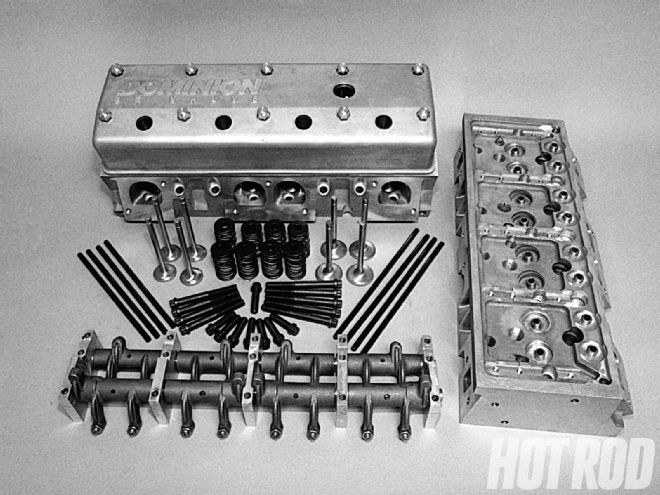
Almost a year ago, we brought you a story entitled "Multivalves For The Masses" (Dec. '97) which described the exciting new four-valve per cylinder small-block Chevy head from Dominion Performance. The piece investigated the hows and whys of these aluminum castings, but we were not able to bring you any first-hand data on how well they work on a running engine. Independent flow bench testing conducted by Nelson Racing Engines showed the Dominion heads to have a distinct advantage over popular aftermarket aluminum racing heads at low- to midrange lift (.600-inch and below),.but people don't race flow benches, and zingy flow numbers don't win races.
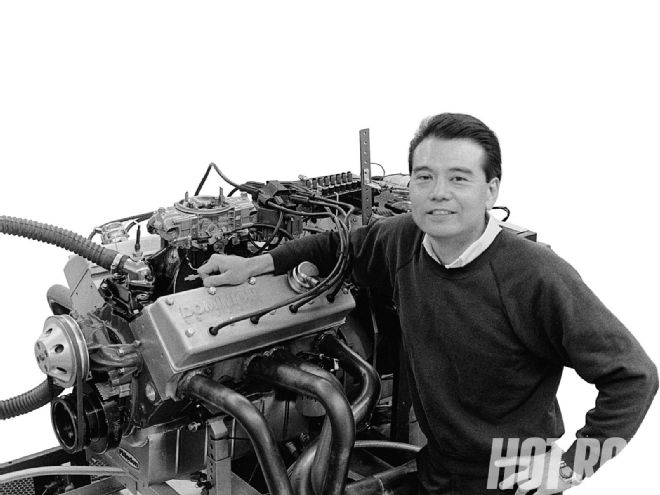 Russ Arao and his 32-valve wonder mouse.
Russ Arao and his 32-valve wonder mouse.
To address the unanswered question of power, we visited John Baechtel's Westech Performance Group for some dyno time. Rather than plop a Dominion-equipped 406 on Westech's Superflow for a fast squat and grunt, we established a baseline with fully ported two-valve aftermarket race heads. Then, with no other changes, we put the 5.0-valve Dominions in place, and the results were impressive.
Heart of the Beast
Dominion's Russ Arao assembled a short-block that was capable of accepting either a cylinder head by simply cutting another set of valve reliefs in the pistons. This allowed us to dyno the motor with the two-valve heads then swap quickly to four-valvers and see the difference without the need to change any other engine components.
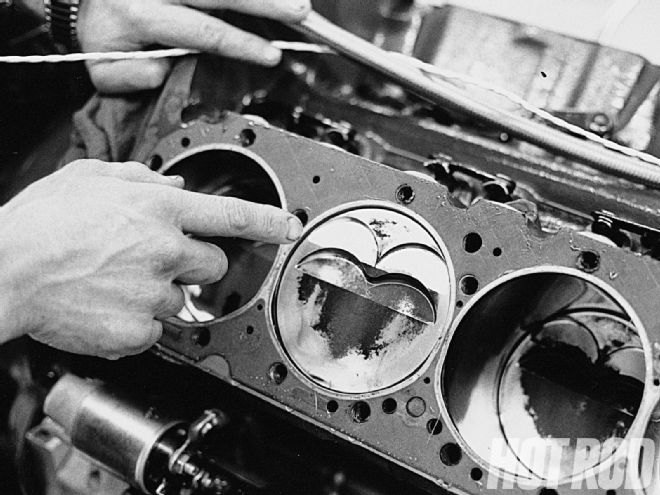 To accommodate two-valve and four-valve heads on the same short-block, Ross pistons were fly-cut to provide clearance for the twin Dominion 1.72-inch intake valves. The 1.45-inch exhaust valves clear at full lift without need for notches.
To accommodate two-valve and four-valve heads on the same short-block, Ross pistons were fly-cut to provide clearance for the twin Dominion 1.72-inch intake valves. The 1.45-inch exhaust valves clear at full lift without need for notches.
The 406-cubic-inch test short-block was based on a regular-production four-bolt main-bearing 400 block, a polished and chamfered 3.75-inch-stroke cast 400 crank, stock-length 5.565-inch Childs & Albert billet steel rods, C&A moly rings, C&A main and rod bearings, and a Milodon high-volume oil pump and deep-sump dyno oil pan. The double fly-cut forged Ross pistons measured 4.160 inches in diameter and yielded a static 10.5:1 compression ratio with both sets of cylinder heads.
The Comp Cams' mechanical roller cam sported 268 degrees of duration at .050 and .614-inch lift on intake and exhaust, and these specifications are valid when combined with the 1.5:1 ratio roller rocker arms used on the two-valve heads. The Dominion heads, however, employed a 1.4:1 rocker arm ratio, which decreased valve lift from .614 to .573 inch. A GM Performance Parts single-plane Bow Tie intake manifold and a 1050cfm Barry Grant Gold Claw carburetor were used along with Hooker D-port dyno headers (2 1/8-inch primaries).
Two-Valve Trials
Baseline testing on the two-valve (2.05 in./1.60 ex.) configuration incorporated ported aluminum racing castings from a prominent aftermarket manufacturer. Flow bench tests prior to the dyno flog revealed that the intake ports passed a very respectable 275 cfm.
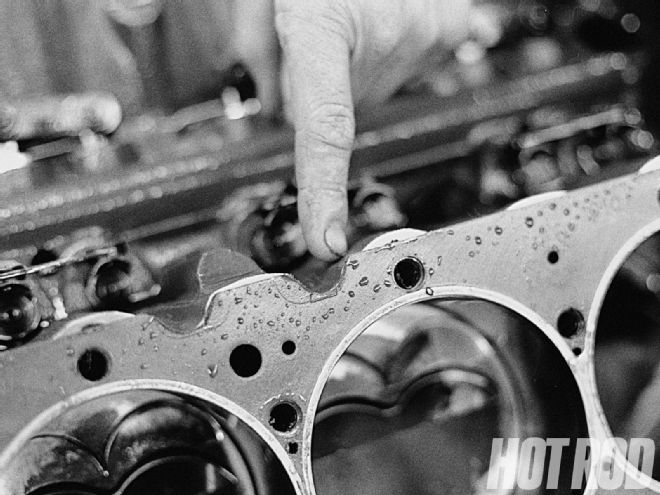 Pushrods inclined at an 8-degree angle keep them from interfering with port configurations and ease alignment with custom rocker arms. The finger points to one of eight notches (four per bank) ground into lifter valley/deck and head gaskets to provide pushrod clearance.
Pushrods inclined at an 8-degree angle keep them from interfering with port configurations and ease alignment with custom rocker arms. The finger points to one of eight notches (four per bank) ground into lifter valley/deck and head gaskets to provide pushrod clearance.
During the test, Baechtel adjusted the carb jetting (#93 primaries, #100 secondaries) and set the ignition timing at 38 degrees of total advance. Several consistent pulls proved the two-valve heads worthy of 425.2 hp at 5,800 rpm and 413.3 lb-ft of torque at 5,100 rpm. For an engine running on 92 octane pump gas, those are decent numbers, although from experience with similar combinations, Baechtel had expected to see closer to 500 hp.
Four-Valve Fortitude
It took about two hours for Russ and his father, Mas, to transform the ordinary 406 Chevy into a far more exotic creature. With spark-plug wires poking neatly through the cast-aluminum valve covers, the small-block suddenly took on a Top Fuel-meets-Formula 1 vibe. But would it run the number?
Baechtel hit the switch and instantly the multivalve mouse came to life. Then JB dialed in the load and worked the stick. The treble-heavy scream of the two-valve setup was obliterated by a bellowing deep bass wail. Minutes later Baechtel had the results: 554.3 hp at 6,400 rpm and 476.8 lb-ft of torque at 5,100 rpm. A few more pulls came within a whisker of the first test and confirmed that with no other changes-even carb jetting and ignition timing were unaltered-the four-valve heads outperformed the ported two-valve race heads by 129.1 hp and 63.5 lb-ft. Even if the two-valve heads were underachieving, as Baechtel had suspected, the Dominion advantage was still very respectable.
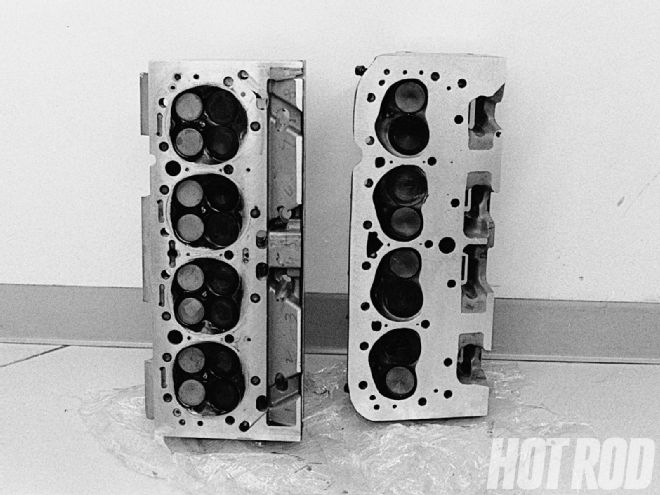 Centrally located spark plugs on four-valve heads (left) help flame propagation and account for some of the performance gain.
Centrally located spark plugs on four-valve heads (left) help flame propagation and account for some of the performance gain.
Were we surprised? You bet! But we were more impressed by the way the Dominion heads produced such smooth horsepower and torque curves; the two-valve power curve was represented by a series of peaks and valleys (see illustrated chart below). The significance of a broad, even power curve is that it provides decent street manners because you don't have to bury your foot to access the grunt. Incidentally, the four-valve conversion made a stout 370 lb-ft of torque at 2,500 rpm and was still making well over 500 hp at seven-grand.
Conclusions
Doubtless, Dominion four-valve heads deliver more power, but are they superior to traditional two-valve heads? It all depends on what you're looking for. Twin intake and exhaust valves offer significantly greater airflow capability at low- to medium-valve lifts, as proven on the flow bench where the Dominion intake port flowed 26 percent more air at .300-inch lift than the fully prepped two-valve port. But by the time the valve lift reached .600 inch, the Dominion advantage was 15.6 percent and dropping. With a cam providing .600 lift or less at the valve, the Dominion head will shine. So if you are building a street or street/strip motor where valve lift is limited, these multivalve heads look good. As a bonus, low-lift cams are easy on valvesprings, a valid point when endurance is a parameter.
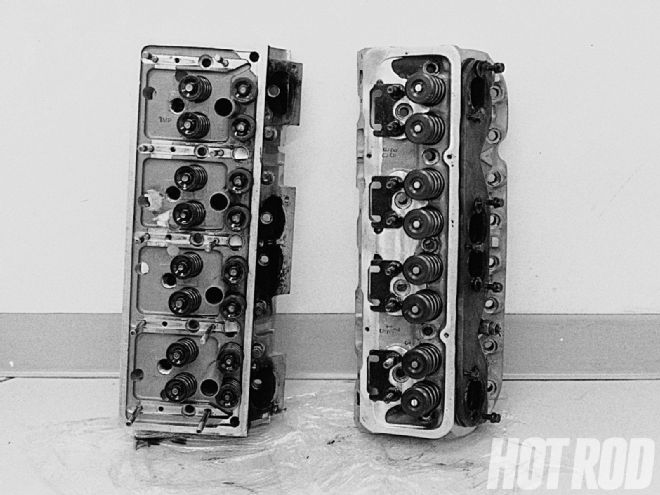 The dominion head accepts any intake manifold designed for a 23-degree Chevy head, although exhaust headers must use a Hooker-style D-shaped, offset bolt-pattern flange.
The dominion head accepts any intake manifold designed for a 23-degree Chevy head, although exhaust headers must use a Hooker-style D-shaped, offset bolt-pattern flange.
In an all-out racing motor where valve lift exceeds .800 inch and where output below 6,000 rpm is of little concern, two-valve heads have a distinct advantage. This is because the flow efficiency of any valve begins to deteriorate as soon as it moves off its seat a distance equal to 25 percent of its diameter. When the Dominion's twin 1.72-inch intake valves lift beyond .430 inch, they exceed this threshold. By contrast, the single 2.20-inch intake valves used in all-out small-blocks reach this critical point when lift exceeds .550 inch.
And for those who might be thinking that the twin 1.72 intakes must surely offset this max-lift loss, be aware that increases in valve area and increases in flow capacity are not linear. Dominion's twin intake valves offer 41.7 percent more area than a single 2.05 valve, but do not represent a 41.7 percent increase in flow (see "Go With the Flow" above). Most people ignore the fact that multiple valves shroud one another where their diameters intersect, diminishing airflow capacity. Also, the twin valves are located much closer to the cylinder wall, yet another source of shrouding. Despite the increased valve area, these other factors mean substantial reductions in efficiency at high valve lift.
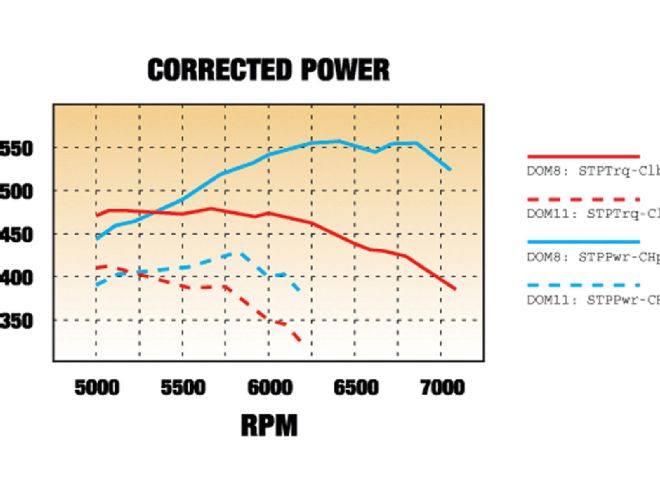 The dyno chart compares the peak output of the Dominion four-valve heads and the two-valve aluminum race heads. Note that the Dominions continue making power well past 6,700 rpm.
The dyno chart compares the peak output of the Dominion four-valve heads and the two-valve aluminum race heads. Note that the Dominions continue making power well past 6,700 rpm.
It is safe to say that the Dominion multivalve setup earns a berth in the highly contested world of small-block Chevy cylinder heads. With prices starting at about $3,500 a pair, they aren't cheap, but with a proven ability to stand head and shoulders above even some of the best two-valve heads when low-to-medium lift cams are used, you can't go wrong. And from a visual standpoint, Dominions dominate!
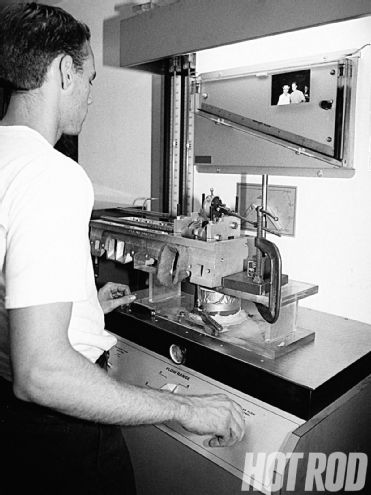
Go With The Flow
To see the flow numbers for ourselves, we took them to Nelson Racing Engines for some suck-work on the company's Superflow flow bench. For a comparison, we are running the published flow numbers for an excellent aftermarket aluminum cylinder head. Pay attention to the mid-lift flow numbers, particularly between .200- and .500-inch lift. (These things push more intake air at a measly .300 inch than many heads peak at, and the exhaust ports flow more air than most heads flow on the intakes!)
Valve lift
Intake
CFM
Exhaust CFM
Four-V
Two-V
Four-V
Two-V
.200
199
150
165
119
.300
268
213
204
167
.400
307
252
239
199
.500
314
267
259
219
.600
318
275
271
225